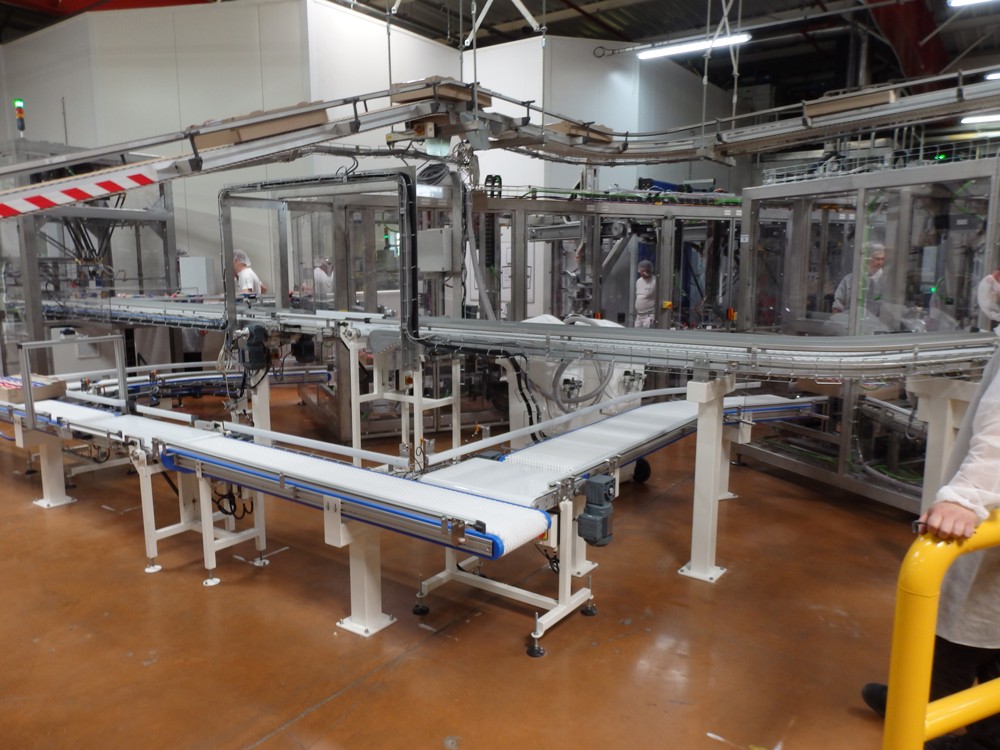Optimum Defense: Industrial Packaging Solutions Tailored for Success
Wiki Article
Reliable Industrial Recycling Solutions for Sustainable Product Packaging: A Comprehensive Guide
That's where this detailed overview on reliable commercial recycling remedies for sustainable packaging comes in. By exploring crucial areas such as packaging product selection, making for recyclability, carrying out recycling facilities, collaborating with reusing partners, and tracking and determining reusing success, this guide will certainly outfit you with the knowledge and devices needed to make educated choices and drive positive modification within your company. Whether you're a packaging expert, sustainability manager, or just interested in the subject, this guide will supply useful insights and techniques to help you navigate the world of lasting packaging.Packaging Material Option
The selection of product packaging products plays a crucial function in making certain the sustainability of industrial recycling services. When it involves sustainable packaging, the selection of products is essential in lessening ecological effect and making best use of reusing effectiveness. Choosing the appropriate materials can help in reducing waste generation, save resources, and advertise a circular economic climate.Products like cardboard, paper, glass, and specific types of plastics can be recycled several times without losing their top quality. On the various other hand, products that are tough to recycle, such as non-recyclable compounds or combined plastics, can produce challenges for the reusing process and might end up in incinerators or landfills.
Another consideration is making use of naturally degradable and sustainable materials. Product packaging made from renewable energies, such as plant-based plastics or biopolymers, can help in reducing dependency on fossil fuels and alleviate environment change. Furthermore, naturally degradable products break down normally in time, reducing the build-up of waste in land fills.
Furthermore, the weight and volume of packaging materials need to be lessened to minimize transport prices and energy consumption. Lightweight materials not only need less resources throughout production yet likewise contribute to reduce carbon discharges during transport.
Creating for Recyclability
In order to make certain the recyclability of product packaging materials, thoughtful design is necessary. Designing for recyclability includes developing packaging that can be quickly sorted, divided, and refined in recycling facilities. One crucial element of creating for recyclability is the choice of products. Product packaging designers must focus on using materials that are extensively accepted for recycling and have developed recycling frameworks. Materials such as glass, light weight aluminum, and certain types of plastic, like pet dog and HDPE, are generally recycled and should be favored over materials that are hard or pricey to reuse.One more essential consideration in creating for recyclability is the removal of unneeded elements or products. By lessening the number of layers, coatings, and additional elements, packaging can be made simpler and easier to recycle. Additionally, designers need to intend to minimize making use of combined materials, as they can complicate the recycling process.

Implementing Recycling Framework
Effective application of recycling infrastructure is vital for the success of commercial reusing options. Without appropriate facilities in position, the reusing procedure becomes inadequate and ineffective, preventing the general goal of lasting packaging.To carry out recycling infrastructure efficiently, a number try this site of crucial factors require to be thought about. Firstly, there ought to be a well-organized collection system that assists in the separation and collection of recyclable materials. This can consist of marked recycling bins in public rooms, along with collaborations with waste monitoring firms for curbside pickup and sorting.
As soon as collected, the recyclable materials require to be delivered to recycling centers in a prompt fashion. This needs efficient logistics and transportation networks, ensuring that the materials reach the ideal centers without delay.
At the recycling facilities, advanced sorting and processing innovations should remain in area to divide different kinds of materials effectively. This includes making use of automated arranging machines, optical scanners, and hands-on sorting methods.
Furthermore, there must be a robust market demand for recycled products. This can be achieved with cooperations with producers and industries that use recycled products in their manufacturing processes. Developing a secure market for recycled materials incentivizes the reusing sector and promotes the circular economy.
Working Together With Recycling Partners

One trick aspect of teaming up with recycling companions is the establishment of clear interaction channels. It is essential to establish open lines of communication to help with the exchange of info, updates, and responses. This enables both parties to stay educated about the progress of reusing initiatives and deal with any kind of difficulties or problems that may emerge.
Additionally, collaboration can involve joint initiatives in creating and carrying out recycling programs. Recycling companions can provide useful insights and support in developing reliable collection systems and establishing one of the most proper recycling technologies. By collaborating, services and reusing companions can enhance the recycling procedure and reduce waste.
Additionally, collaboration can expand beyond the functional aspects of reusing. It can also incorporate advocacy and education and learning campaigns. By joining pressures, companies and recycling partners can elevate recognition concerning the value of recycling and advertise the adoption of lasting product packaging methods amongst customers and other stakeholders.
Monitoring and Measuring Recycling Success
To guarantee the efficiency of commercial reusing remedies and the success of lasting product packaging objectives, it is important for businesses and their reusing partners to develop a comprehensive system for monitoring and gauging reusing success (plastic container manufacturer). Measuring and tracking recycling success permits organizations to analyze the influence of their reusing initiatives, recognize areas for renovation, and set significant targets for future progressionOne means to track reusing success is through the usage of data collection and analysis devices. By accumulating information on the quantity of product packaging waste generated, the portion of waste that is reused, and the kinds of products being reused, businesses can get important insights into their reusing efficiency. This data can then be assessed to identify trends, patterns, and locations of ineffectiveness.
One more vital aspect of tracking and determining reusing success is establishing standard and clear metrics. This enables businesses to contrast their efficiency against sector criteria and track their progression in time. Metrics such as reusing rates, waste diversion rates, and greenhouse gas exhausts can supply a measurable action of a business's reusing success.

Final Thought
Finally, implementing reliable industrial recycling remedies for sustainable product packaging needs careful consideration of product packaging product choice, creating for recyclability, executing reusing facilities, teaming up with reusing partners, and tracking and measuring recycling success. By integrating these practices, companies can add to a much more sustainable and environmentally-friendly approach to product packaging, decreasing waste and advertising the round economy.By exploring key locations such as product packaging material choice, creating for recyclability, carrying out recycling framework, working together with reusing partners, and monitoring and measuring recycling success, this guide will furnish you index with the knowledge and tools required to make educated decisions and drive favorable adjustment within your company. Packaging developers must prioritize the usage of products that are commonly approved for recycling and have established reusing infrastructures.Partnership with recycling companions is important for the successful application of commercial recycling services and the success of lasting product packaging goals. By joining pressures, companies and recycling partners can increase recognition concerning the relevance of recycling and promote the fostering of lasting product packaging techniques among consumers and other stakeholders.
By collecting data on the amount of product packaging waste generated, the percentage of waste that is recycled, and the kinds of products being reused, services can acquire valuable understandings into their reusing efficiency.
Report this wiki page